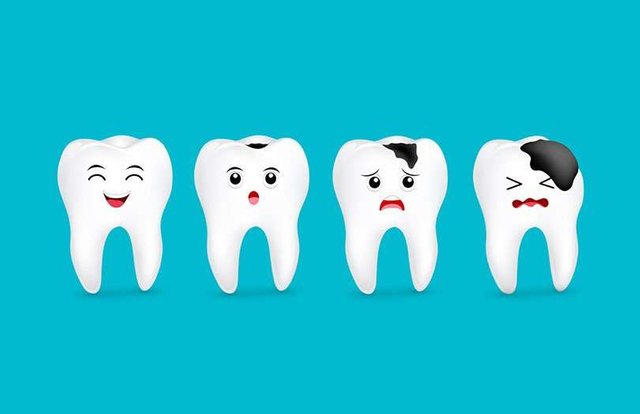Stages of Tooth Decay and Their Treatment

Tooth decay is one of the most common oral diseases. It affects the teeth and leads to the destruction of their structure. This disease can affect people of all ages and social groups, and its impact on a person's overall health should not be underestimated. Cavities are often accompanied by pain, bad breath, and, in more advanced cases, tooth loss. Understanding the stages of tooth decay and current treatments is crucial to preventing and maintaining oral health.
The first stage of decay: the white spot stage
The initial stage of tooth decay is the white spot stage. At this stage, the disease begins with the formation of demineralization zones on the tooth surface. It is caused by the loss of minerals such as calcium and phosphate, which makes tooth enamel vulnerable. It is visually visible through dull or calcareous stains on the tooth enamel.
At this point, the tooth is not yet permanently damaged, and the process can be stopped or even reversed. The main goal of treatment is to restore the mineralization of tooth enamel. For this purpose, fluoride-containing preparations are used, which help to strengthen tooth enamel and prevent further tooth decay. Maintaining good oral hygiene to remove plaque and food debris that can promote bacterial growth is also important.
The second stage of caries: surface caries
If no action is taken on the white spot stage, decay can progress to the next stage: surface decay. In this stage, damage to tooth enamel becomes more visible, and small holes appear on the tooth surface. Surface caries often cause increased tooth sensitivity to cold, hot, or sweet foods.
To treat surface caries, removing the affected part of the tooth and restoring its structure is necessary. Composite materials are used at this stage to ensure a durable and aesthetic restoration. It is important to visit the dentist in time to prevent further tooth decay and maintain functionality.
The third stage of decay: intermediate decay
Moderate decay is characterized by deeper damage to the tooth. The decay process penetrates the enamel and reaches the dentin—the inner layer of the tooth. At this stage, tooth decay can cause severe pain and discomfort, especially when eating. In addition, visible damage can occur to the tooth, making it more susceptible to infection and damage.
Treating moderately severe caries requires a more complex intervention. If the damage is too extensive, the dentist will remove all the damaged tissue and restore the tooth with composite materials or crowns. At this stage, it is important to treat tooth decay as soon as possible to avoid further complications such as pulp infection.
Fourth stage of decay: deep decay
Deep tooth decay is the final and most severe stage of the disease. In this stage, the decay process penetrates deep into the tooth and can affect the pulp – the neurovascular bundle inside the tooth. It causes severe pain and inflammation and can cause pulp necrosis, which requires immediate medical attention.
Treatment of deep cavities involves removing the affected tissue and root canal treatment. This process is called endodontic treatment. In some cases, if the tooth cannot be restored, it may need to be removed. After successful root canal treatment, the tooth can be restored using a crown, which ensures its durability and functionality. If you have deep decay, you can search for "endodontist near me" to evaluate your condition and undergo proper treatment.
The bottom line
Tooth decay is a serious condition that can lead to serious dental and oral health problems. Understanding the development stages of dental caries and modern treatment methods helps prevent and treat this disease in time. Regular oral hygiene, a healthy diet, and regular visits to the dentist are the most important elements in preventing tooth decay. The earlier caries are detected, the easier and more effective their treatment will be, which will help maintain the health of your teeth and oral cavity for many years.
"Wow, what a comprehensive and informative post! 🤩 Thank you for sharing your knowledge on the stages of tooth decay and their treatment. It's amazing how far-reaching the impact can be if we don't take care of our teeth properly 😬. I'm definitely taking away some valuable tips from this post to prioritize my oral health and share with others in the community 🤝.
Let's discuss: have you ever had any experiences with tooth decay or other dental issues? How did you handle them? What are your favorite tips for maintaining healthy teeth and gums? 💬
Also, don't forget to support our ecosystem by voting for @xpilar.witness (https://steemitwallet.com/~witnesses) - every vote counts! 😊"